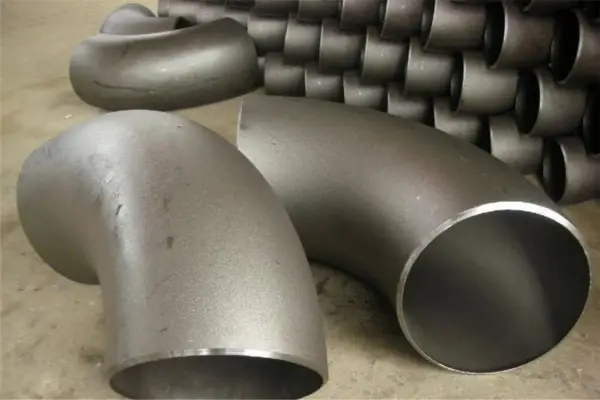Analysis of the core role and application of 90° elbows in pipeline systems
As an indispensable connector in pipeline systems, 90° elbows play an important role in industrial production and civil facilities. Although it has a simple structure, it actually plays a key role in ensuring the efficient and safe operation of pipeline systems. This article will analyze in depth how 90° elbows cope with challenges under different working conditions from functional characteristics, working principles to actual application scenarios, and help optimize the design and long-term operation of pipeline systems.
Basic functions and core roles of 90° elbows
The 90° elbow is a key component for changing the direction of the pipeline. The design combines the principles of fluid mechanics and material science, which can significantly reduce fluid resistance and avoid turbulence and pressure drop caused by right-angle turns. Compared with right-angle connections, high-quality 90° elbows can reduce fluid resistance by 30%-50%, improve transportation efficiency, and save energy.
Direction conversion
Its most basic function is to achieve right-angle turning of the pipeline, which is suitable for pipe layout needs that need to bypass beams, columns or equipment in buildings and industrial systems. Compared with 45° elbows, 90° elbows have more advantages in compact spaces and are commonly found in kitchens, bathrooms, mezzanines, etc., which not only solve layout problems but also maintain overall beauty.
Connection function
90° elbows can connect pipe sections of the same or different diameters through various methods such as threads, welding, flanges, and sockets to ensure the sealing and integrity of the system. They widely follow international standards such as ANSI B16.9, ASME, and ASTM, so that pipe components from different manufacturers can be seamlessly connected, simplifying design and construction.
System reliability
It has strong high-pressure resistance and can be selected according to different pressure levels (such as Sch20, STD,
Sch40,
Sch80, etc.). High-pressure systems mostly use elbows of grade Sch80 or above, while low-pressure pipe networks in buildings use ordinary wall thickness products, which can flexibly adapt to various engineering needs.
Fluid property adaptation
90° elbows can also be selected from different materials according to fluid properties. For example, stainless steel or alloy materials are used for corrosive media; wear-resistant products lined with ceramics are used for conveying highly abrasive slurries. A variety of material configurations ensure long-term stable operation in the fields of petroleum, chemical, food, and pharmaceuticals.
Maintenance convenience
The standardized design facilitates replacement and maintenance. Some special models, such as grooved or ferrule 90° elbows, can be quickly disassembled and assembled, greatly shortening maintenance time. This is especially important in systems that require frequent cleaning or inspection, such as food processing and pharmaceutical pipelines.
Application types of elbows of different materials
|
Material Type
|
International Standard
|
Typical Application
|
Performance Advantages
|
|
Carbon Steel
|
ASTM A234 WPB/WPC
|
General Industrial Pipelines
|
Cost-effective, compressive strength ≥415MPa
|
|
Stainless Steel
|
A403 WP316L
|
Corrosive Media
|
Contains 2-3% molybdenum, pitting corrosion resistant
|
|
Duplex Steel
|
ASTM A182 F51
|
Marine Engineering
|
PREN ≥35, resistant to chloride corrosion
|
|
Alloy Steel
|
A234 WP11 CL2
|
High Temperature & High Pressure
|
Chromium alloy, excellent long-term strength
|

Conclusion:
From the global perspective of system design, the 90° elbow is not just a simple connection component, but a key element that directly affects the reliability, efficiency and life of the pipeline system. Reasonable selection and correct use of
90° elbows can significantly improve the performance of the entire pipeline system and reduce the risk of failure and maintenance requirements during operation. Whether it is the intricate drainage network underground in the city or the intricate process pipelines in the chemical plant, the 90° elbow is silently fulfilling its important responsibilities to ensure that all kinds of fluids reach their destination safely and efficiently.






 English
English Español
Español بالعربية
بالعربية











 Phone :
Phone :  Whatsapp :
Whatsapp :  Email :
Email : 


